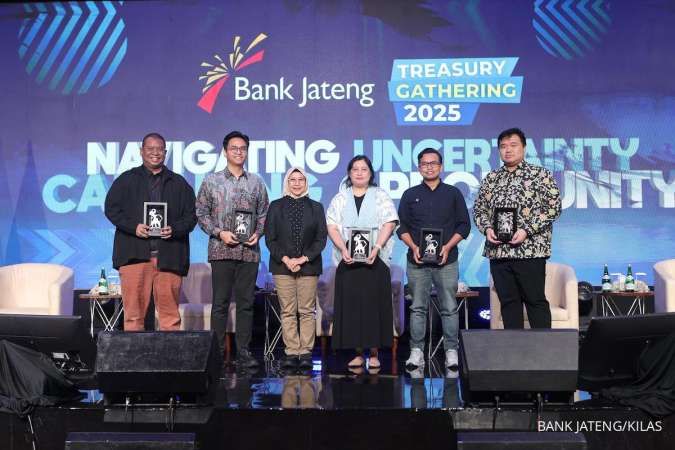KONTAN.CO.ID - JAKARTA. Despite expansive credit growth, PT Bank Mandiri Tbk (
BMRI) appears to maintain the quality of its credit. This aligns with Bank Mandiri's credit portfolio, which is heavily concentrated in the corporate sector. For context, the bank's non-performing loan (NPL) position has flattened to a level of 1.01% as of June 2024. This position is significantly better compared to June 2024, when it was at 1.53%, marking a decrease of 52 basis points (bps). Indeed, Bank Mandiri seems to be benefiting at a time when the banking industry is grappling with deteriorating credit quality in the SME sector. This is because SME loans only amount to IDR 127 trillion out of a total credit of IDR 1,532.35 trillion.
Baca Juga: Jalan Panjang 10 Tahun Pembangunan Infrastruktur di Era Presiden Jokowi Bank Mandiri's Finance Director, Sigit Prastowo, says the strategy used by the bank, symbolized by a gold ribbon, to remain prudent is to focus on corporate credit growth. Of course, this is done while considering the existing portfolio guidelines. “We are also disciplined in choosing according to what is healthy and the strategies we implement include loan follow transactions,” he said. For retail credit, Sigit says his party is expanding with an approach to corporate ecosystems and also leading sectors in the region. This step is taken to anticipate unpredictable economic conditions. On the other hand, Bank Mandiri has also established adequate reserves. As of June, the bank with the issuer code
BMRI has prepared sufficient reserves, with the bank's NPL Coverage ratio at an optimal level of 332%.
Thanks to discipline in implementing risk management, the cost of credit (CoC) for Bank Mandiri has also been maintained at a level of 0.86% as of June 2024. This is an improvement compared to June 2023, when it was 0.98% “In expanding credit, Bank Mandiri always pays attention to potential risks, such as weakening purchasing power,” he concluded.






